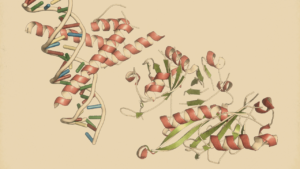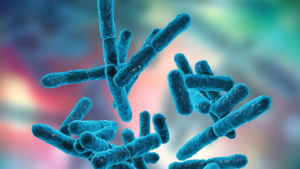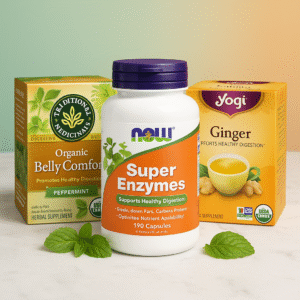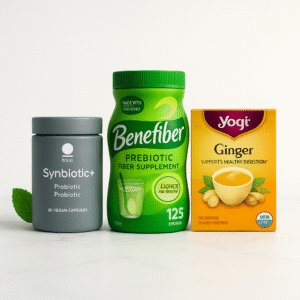Polyphenols Your Gut Microbiota Will Love
Discover the top polyphenols that will nourish your gut microbiota and enhance your gut health. Learn the benefits and powerful compounds

In This Article:
Key Points
- Polyphenols can stimulate the growth of beneficial bacteria in the gut while inhibiting harmful ones.
- Beneficial gut microbes can transform polyphenols into bioactive phenolic metabolites.
- Polyphenols exhibit antimicrobial mechanisms, helping to modulate gut microbial communities.
- Polyphenols have prebiotic-like effects, creating a favorable environment for beneficial bacteria.
- Polyphenols can increase the production of short-chain fatty acids, which can affect the absorption of polyphenol metabolites.
Gut microbes have enzymes that help make (poly)phenols, which are good for our health, available and active in our bodies.
Research has shown how these (poly)phenols can change the microbes in our gut in a way that's good for us.
Some probiotic strains can turn (poly)phenols into helpful metabolites, which thrive in the presence of these substrates.
Even bacteria that don't directly metabolize (poly)phenols, like the anti-obesity bacterium Akkermansia muciniphila, benefit from them.
This review suggests the term "duplibiotic" to describe how (poly)phenols act as both antimicrobials and prebiotics, potentially helping with metabolic issues and gut problems.
This makes them a good dietary strategy with therapeutic potential.
Powerful Connection: Polyphenols and Gut Health
The gut microbiota is a vital player in maintaining host physiology, influencing various physiological axes like the gut-brain, gut-lung, and gut-skin connections A Trusted Source Xiao H, Kang S. The role of the gut microbiome in energy balance with a focus on the gut-adipose tissue axis.Front Genet.(2020) 11:297. doi: 10.3389/fgene.2020.00297 PubMed AbstractCrossRef Full TextGoogle Scholar.
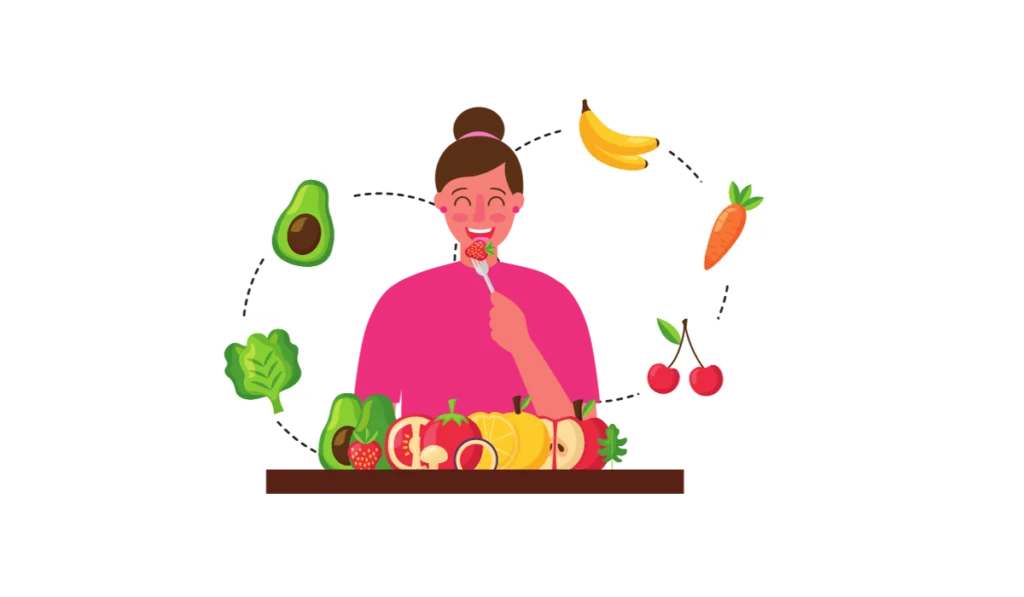
This intricate relationship plays a significant role in managing diseases like cancer, intestinal inflammation, and cardiometabolic diseases A Trusted Source Philip P, Sagaspe P, Taillard J, Mandon C, Constans J, Pourtau L, et al. Acute intake of a grape and blueberry polyphenol-rich extract ameliorates cognitive performance in healthy young adults during a sustained cognitive effort.Antioxidants.(2019) 8:650. doi: 10.3390/antiox8120650 PubMed AbstractCrossRef Full TextGoogle Scholar.
Consequently, the gut microbiota has emerged as a promising therapeutic target for numerous chronic diseases.
Diet has a profound impact on shaping the intestinal microbiota A Trusted Source Alexander M, Turnbaugh PJ. Deconstructing mechanisms of diet-microbiome-immune interactions.Immunity.(2020) 53:264–76. doi: 10.1016/j.immuni.2020.07.015 PubMed AbstractCrossRef Full TextGoogle Scholar.
Commensal microbiota fermentation results in numerous cross-feeding networks that supply essential nutrients and chemical signals for immune and metabolic processes A Trusted Source Rodriguez-Castano GP, Dorris MR, Liu X, Bolling BW, Acosta-Gonzalez A, Rey FE.Bacteroides thetaiotaomicronstarch utilization promotes quercetin degradation and butyrate production byEubacterium ramulus.Front Microbiol(2019) 10:1145. doi: 10.3389/fmicb.2019.01145 PubMed AbstractCrossRef Full TextGoogle Scholar.
Traditionally, prebiotics were confined to specific non-digestible carbohydrates, but now phytochemicals like (poly)phenols are recognized for their potential prebiotic effects.
These effects include stimulating beneficial bacteria and reducing disease incidence A Trusted Source Gibson GR, Hutkins R, Sanders ME, Prescott SL, Reimer RA, Salminen SJ, et al. Expert consensus document: The International Scientific Association for Probiotics and Prebiotics (ISAPP) consensus statement on the definition and scope of prebiotics.Nat Rev Gastroenterol Hepatol.(2017) 14:491–502. doi: 10.1038/nrgastro.2017.75 PubMed AbstractCrossRef Full TextGoogle Scholar.
As secondary plant metabolites, (poly)phenols are found in many diets, where they interact with gut bacteria to promote health A Trusted Source Masumoto S, Terao A, Yamamoto Y, Mukai T, Miura T, Shoji T. Non-absorbable apple procyanidins prevent obesity associated with gut microbial and metabolomic changes.Sci Rep-uk.(2016) 6:31208. doi: 10.1038/srep31208 PubMed AbstractCrossRef Full TextGoogle Scholar.
They particularly stimulate crucial bacterial species like Akkermansia muciniphila, Bacteroides thetaiotaomicron, Faecalibacterium prausnitzii, Bifidobacteria, and Lactobacilli A Trusted Source 20. Gonzalez-Sarrias A, Romo-Vaquero M, Garcia-Villalba R, Cortes-Martin A, Selma MV, Espin JC. The endotoxemia marker lipopolysaccharide-binding protein is reduced in overweight-obese subjects consuming pomegranate extract by modulating the gut microbiota: a randomized clinical trial.Mol Nutr Food Res.(2018) 62:e1800160. doi: 10.1002/mnfr.201800160PubMed AbstractCrossRef Full TextGoogle Scholar.
Polyphenols benefit the gut microbiota through two main actions: direct bacterial stimulation and antimicrobial effects.
Beneficial bacteria genomes contain (poly)phenol-associated enzymes (PAZymes) that metabolize (poly)phenols, thus improving bacteria fitness and persistence in the gut A Trusted Source Arumugam M, Raes J, Pelletier E, Le Paslier D, Yamada T, Mende DR, et al. Enterotypes of the human gut microbiome.Nature.(2011) 473:174–80. doi: 10.1038/nature09944 CrossRef Full TextGoogle Scholar.
Additionally, (poly)phenols can selectively inhibit potential pathogenic species associated with metabolic disorders A Trusted Source Beaumont M, Goodrich JK, Jackson MA, Yet I, Davenport ER, Vieira-Silva S, et al. Heritable components of the human fecal microbiome are associated with visceral fat.Genome Biol.(2016) 17:189. doi: 10.1186/s13059-016-1052-7 PubMed AbstractCrossRef Full TextGoogle Scholar.
The interaction between (poly)phenols and the gut microbiota results in ecological shifts that support symbiotic relationships, further modulating microbiota composition and function.
Dietary (poly)phenol intake can enhance the presence of beneficial bacteria like Akkermansia muciniphila, showcasing its resistance to (poly)phenol's antimicrobial action and ability to occupy ecological niches.
Furthermore, PAZymes-producing bacteria can provide beneficial metabolites for other bacteria through complex trophic cross-feeding chains.
Emerging reports suggest that certain (poly)phenols can be utilized and transformed into bioactive phenolic metabolites by beneficial gut microbes like Lactiplantibacillus plantarum, ultimately contributing to human health A Trusted Source Reveron I, de las Rivas B, Matesanz R, Munoz R, Lopez de Felipe F. Molecular adaptation ofLactobacillus plantarumWCFS1 to gallic acid revealed by genome-scale transcriptomic signature and physiological analysis.Microb Cell Fact.(2015) 14:160. doi: 10.1186/s12934-015-0345-y PubMed AbstractCrossRef Full TextGoogle Scholar.
This review introduces the term "duplibiotics" to describe (poly)phenols that modulate gut microbiota through a dual antimicrobial and beneficial bacteria stimulatory effect.
Study the effects of (poly)phenols on obesity-linked inflammatory bacteria caused by diet-induced conditions, and analyze their impact on the growth of beneficial commensal bacteria.
This article also delves into key bacterial enzymes involved in the potential prebiotic effects of (poly)phenols and their contribution to microbial trophic networks in the intestinal environment, using A.muciniphila as a model organism.
Understanding the Gut Microbiota's Role in Human Health
The human gastrointestinal (GI) tract is home to a staggering 10^14 active bacteria, primarily consisting of Firmicutes, Bacteroidota, Actinobacteria, Proteobacteria, and Verrucomicrobia A Trusted Source Whitman WB, Oren A, Chuvochina M, da Costa MS, Garrity GM, Rainey FA, et al. Proposal of the suffix -otato denote phyla. Addendum to 'Proposal to include the rank of phylum in the International Code of Nomenclature of Prokaryotes'.Int J Syst Evol Microbiol.(2018) 68:967–9. doi: 10.1099/ijsem.0.002593 PubMed AbstractCrossRef Full TextGoogle Scholar.
These bacteria play a vital role in our overall health, contributing significantly to metabolic processes and the immune system.
Decoding the Microbial Population
The largest bacterial phylum in humans and rodents is Firmicutes, with over 250 genera.
Bacteroidota follows, with around 20 genera, including the prominent genus Bacteroides A Trusted Source Graham C, Mullen A, Whelan K. Obesity and the gastrointestinal microbiota: a review of associations and mechanisms.Nutr Rev.(2015) 73:376–85. doi: 10.1093/nutrit/nuv004 PubMed AbstractCrossRef Full TextGoogle Scholar.
Actinobacteria, accounting for 5% of total bacteria, contains the genus Bifidobacterium, which is a source of many probiotics A Trusted Source Chang CJ, Lin TL, Tsai YL, Wu TR, Lai WF, Lu CC, et al. Next generation probiotics in disease amelioration.J Food Drug Anal.(2019) 27:615–22. doi: 10.1016/j.jfda.2018.12.011 PubMed AbstractCrossRef Full TextGoogle Scholar.
The phylum Verrucomicrobia, though less prominent, includes the next-generation probiotic Akkermansia spp A Trusted Source Shin J, Noh JR, Chang DH, Kim YH, Kim MH, Lee ES, et al. Elucidation ofAkkermansia muciniphilaprobiotic traits driven by mucin depletion.Front Microbiol.(2019) 10:1137. doi: 10.3389/fmicb.2019.01137 PubMed AbstractCrossRef Full TextGoogle Scholar.
The Extensive Genetic Code of the Gut Microbiota
It's fascinating to note that the gut microbiota encodes approximately 40 times more genes than the human host, allowing it to break down complex dietary compounds efficiently A Trusted Source Rastelli M, Cani PD, Knauf C. The gut microbiome influences host endocrine functions.Endocr Rev.(2019) 40:1271–84. doi: 10.1210/er.2018-00280 PubMed AbstractCrossRef Full TextGoogle Scholar.
This process is crucial for digesting plant constituents, fermenting proteins, transforming xenobiotics, and producing essential vitamins A Trusted Source Williams BA, Grant LJ, Gidley MJ, Mikkelsen D. Gut fermentation of dietary fibres: physico-chemistry of plant cell walls and implications for health.Int J Mol Sci.(2017) 18:2203. doi: 10.3390/ijms18102203 PubMed AbstractCrossRef Full TextGoogle Scholar.
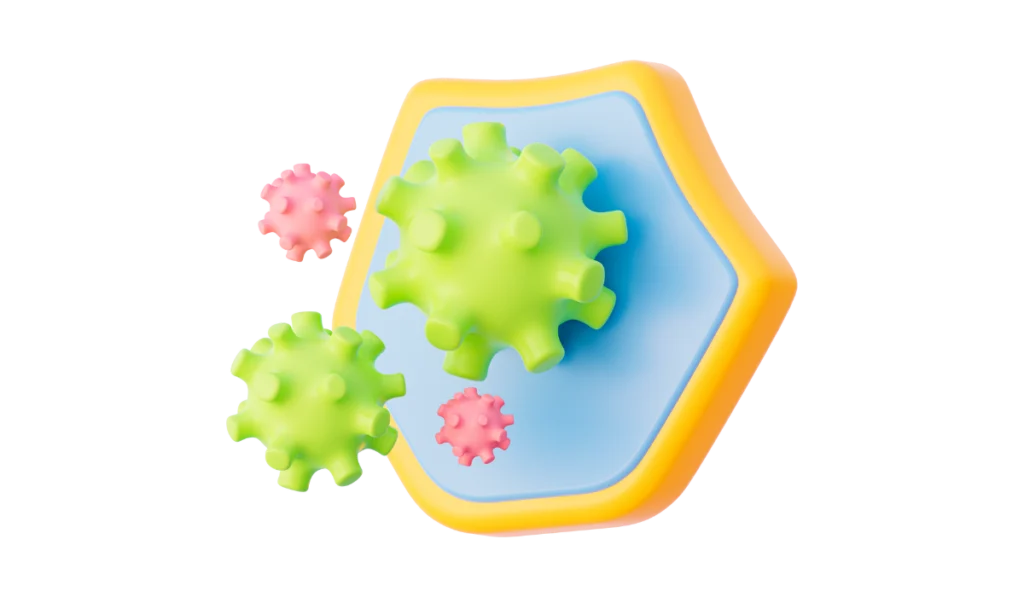
Beneficial and Harmful Metabolites: A Fine Balance
The activities of the gut microbiota result in the production of beneficial metabolites like short-chain fatty acids (SCFA), neurotransmitters, and gasotransmitters A Trusted Source McCarville JL, Chen GY, Cuevas VD, Troha K, Ayres JS. Microbiota metabolites in health and disease.Annu Rev Immunol.(2020) 38:147–70. doi: 10.1146/annurev-immunol-071219-125715 CrossRef Full TextGoogle Scholar.
SCFAs are integral to energy homeostasis, immune signaling, and even suppressing proinflammatory effects A Trusted Source Yan H, Ajuwon KM. Butyrate modifies intestinal barrier function in IPEC-J2 cells through a selective upregulation of tight junction proteins and activation of the Akt signaling pathway.PLoS ONE.(2017) 12:e0179586. doi: 10.1371/journal.pone.0179586 PubMed AbstractCrossRef Full TextGoogle Scholar.
However, it's essential to note that harmful metabolites can also be produced, such as secondary bile acids and trimethylamine-N-oxide A Trusted Source Cortes-Martin A, Selma MV, Tomas-Barberan FA, Gonzalez-Sarrias A, Espin JC. Where to look into the puzzle of polyphenols and health? The postbiotics and gut microbiota associated with human metabotypes.Mol Nutr Food Res.(2020) 64:e1900952. doi: 10.1002/mnfr.201900952 PubMed AbstractCrossRef Full TextGoogle Scholar.
The Immune System's Interaction with the Gut Microbiota
The majority of the body's immune cells are found in the colonic epithelium, where they interact closely with the gut microbiota A Trusted Source Jung C, Hugot JP, Barreau F. Peyer's patches: the immune sensors of the intestine.Int J Inflam.(2010) 2010:823710. doi: 10.4061/2010/823710 PubMed AbstractCrossRef Full TextGoogle Scholar.
The immune system continuously monitors the gut for potential pathogens and initiates an immune response when necessary A Trusted Source Lavelle EC, Murphy C, O'Neill LA, Creagh EM. The role of TLRs, NLRs, and RLRs in mucosal innate immunity and homeostasis.Mucosal Immunol.(2010) 3:17–28. doi: 10.1038/mi.2009.124 PubMed AbstractCrossRef Full TextGoogle Scholar.
A healthy gut microbiota, also known as eubiosis, is vital for balanced immunological interactions A Trusted Source Wilkins LJ, Monga M, Miller AW. Defining dysbiosis for a cluster of chronic diseases.Sci Rep.(2019) 9:12918. doi: 10.1038/s41598-019-49452-y PubMed AbstractCrossRef Full TextGoogle Scholar.
The link between Gut Microbiota and Chronic Diseases
Studies have consistently shown that alterations in the gut microbiota can contribute to the development of chronic metabolic diseases A Trusted Source Ridaura VK, Faith JJ, Rey FE, Cheng J, Duncan AE, Kau AL, et al. Gut microbiota from twins discordant for obesity modulate metabolism in mice.Science.(2013) 341:1241214. doi: 10.1126/science.1241214 PubMed AbstractCrossRef Full TextGoogle Scholar.
Specific bacterial species, like Bifidobacteria and Lactobacilli, have demonstrated the ability to reduce the severity of inflammatory diseases such as ulcerative colitis and obesity A Trusted Source Sheng K, He S, Sun M, Zhang G, Kong X, Wang J, et al. Synbiotic supplementation containingBifidobacterium infantisand xylooligosaccharides alleviates dextran sulfate sodium-induced ulcerative colitis.Food Funct.(2020) 11:3964–74. doi: 10.1039/D0FO00518E PubMed AbstractCrossRef Full TextGoogle Scholar.
Probiotic strains like L.plantarum WCFS1 have been shown to improve inflammation A Trusted Source Fang C, Kim H, Yanagisawa L, Bennett W, Sirven MA, Alaniz RC, et al. Gallotannins andLactobacillus plantarumWCFS1 mitigate high-fat diet-induced inflammation and induce biomarkers for thermogenesis in adipose tissue in gnotobiotic mice.Mol Nutr Food Res.(2019) 63:e1800937. doi: 10.1002/mnfr.201800937 PubMed AbstractCrossRef Full TextGoogle Scholar.
Other next-generation probiotics, like A.muciniphila, B.thetaiotaomicron, and F.prausnitzii, interact closely with the host immune system, providing several benefits A Trusted Source Leylabadlo HE, Ghotaslou R, Feizabadi MM, Farajnia S, Moaddab SY, Ganbarov K, et al. The critical role of Faecalibacterium prausnitziiin human health: an overview.Microb Pathog.(2020) 149:104344. doi: 10.1016/j.micpath.2020.104344 PubMed AbstractCrossRef Full TextGoogle Scholar.
Tapping Into the Power of Polyphenols for Gut Health
Polyphenols, comprising flavonoids and non-flavonoids, are aromatic ring compounds integral to our diet A Trusted Source Singla RK, Dubey AK, Garg A, Sharma RK, Fiorino M, Ameen SM, et al. Natural polyphenols: chemical classification, definition of classes, subcategories, and structures.J AOAC Int.(2019) 102:1397–400. doi: 10.5740/jaoacint.19-0133 PubMed AbstractCrossRef Full TextGoogle Scholar.
A whopping 90-95% of polyphenols, predominantly flavonoid aglycones and polymers, reach the colon where they interact with gut microbiota, showcasing their antimicrobial and prebiotic properties A Trusted Source Masumoto S, Terao A, Yamamoto Y, Mukai T, Miura T, Shoji T. Non-absorbable apple procyanidins prevent obesity associated with gut microbial and metabolomic changes.Sci Rep-uk.(2016) 6:31208. doi: 10.1038/srep31208 PubMed AbstractCrossRef Full TextGoogle Scholar.
Revisiting the Definition of Prebiotics
Traditionally, prebiotics have been restricted to non-digestible carbohydrates like inulin and FOS.
However, recent developments by the International Scientific Association for Probiotics and Prebiotics (ISAPP) highlight that polyphenols too can be classified as prebiotics.
The reason being, polyphenols encourage the growth of gut bacteria beneficial to our health A Trusted Source Gibson GR, Hutkins R, Sanders ME, Prescott SL, Reimer RA, Salminen SJ, et al. Expert consensus document: The International Scientific Association for Probiotics and Prebiotics (ISAPP) consensus statement on the definition and scope of prebiotics.Nat Rev Gastroenterol Hepatol.(2017) 14:491–502. doi: 10.1038/nrgastro.2017.75 PubMed AbstractCrossRef Full TextGoogle Scholar.
Foods rich in polyphenols can help mitigate metabolic and inflammatory diseases, boost intestinal mucus production, promote gut antimicrobial peptides, and even modulate hepatic bile acids and gut immunoglobulins A Trusted Source van der Lugt B, van Beek AA, Aalvink S, Meijer B, Sovran B, Vermeij WP, et al.Akkermansia muciniphilaameliorates the age-related decline in colonic mucus thickness and attenuates immune activation in accelerated aging Ercc1 (-/Delta7) mice.Immun Ageing.(2019) 16:6. doi: 10.1186/s12979-019-0145-z PubMed AbstractCrossRef Full TextGoogle Scholar.
The Dual Effect of Polyphenols on Gut Microbiota: Introducing Duplibiotics
A remarkable aspect of polyphenols is their dual antimicrobial and growth-stimulating effects on gut microbiota, rightly termed as 'duplibiotics'.
This term, which we propose, accurately represents the synergistic antimicrobial and prebiotic properties of polyphenols.
For instance, red wine polyphenols have been shown to increase the abundance of beneficial gut bacteria like Bifidobacteria and Lactobacilli.
while inhibiting harmful ones in metabolic syndrome patients A Trusted Source Roopchand DE, Carmody RN, Kuhn P, Moskal K, Rojas-Silva P, Turnbaugh PJ, et al. Dietary polyphenols promote growth of the gut bacteriumAkkermansia muciniphilaand attenuate high-fat diet–induced metabolic syndrome.Diabetes.(2015) 64:2847–58. doi: 10.2337/db14-1916 PubMed AbstractCrossRef Full TextGoogle Scholar.
Unlocking the Antimicrobial Power of Polyphenols
Polyphenols, complex compounds found in our diet, exhibit a range of antimicrobial mechanisms that significantly modulate gut microbial communities A Trusted Source Firrman J, Liu L, Argoty GA, Zhang L, Tomasula P, Wang M, et al. Analysis of temporal changes in growth and gene expression for commensal gut microbes in response to the polyphenol naringenin.Microbiol Insights.(2018) 11:1178636118775100. doi: 10.1177/1178636118775100 PubMed AbstractCrossRef Full TextGoogle Scholar.
These compounds can interact with bacterial proteins to inhibit nucleic acid synthesis, modify cell walls, affect cell metabolism, and prevent biofilm formation A Trusted Source Makarewicz M, Drozdz I, Tarko T, Duda-Chodak A. The interactions between polyphenols and microorganisms, especially gut microbiota.Antioxidants.(2021) 10:188. doi: 10.3390/antiox10020188 PubMed AbstractCrossRef Full TextGoogle Scholar.
Furthermore, polyphenols can disrupt bacterial communication, known as quorum sensing A Trusted Source Vikram A, Jayaprakasha GK, Jesudhasan PR, Pillai SD, Patil BS. Suppression of bacterial cell-cell signalling, biofilm formation and type III secretion system by citrus flavonoids.J Appl Microbiol.(2010) 109:515–27. doi: 10.1111/j.1365-2672.2010.04677.x PubMed AbstractCrossRef Full TextGoogle Scholar,
and chelate essential metals like iron, copper, and zinc that are vital for bacterial metabolism A Trusted Source Engels C, Knodler M, Zhao YY, Carle R, Ganzle MG, Schieber A. Antimicrobial activity of gallotannins isolated from mango (Mangifera indicaL.) kernels.J Agric Food Chem.(2009) 57:7712–8. doi: 10.1021/jf901621m PubMed AbstractCrossRef Full TextGoogle Scholar .
As a result, polyphenols act as powerful inhibitors of opportunistic pathogens, safeguarding the intestinal epithelium and restoring microbiota balance in several diseases.

Polyphenols: Shaping Microbial Genetic Responses
The antimicrobial action of polyphenols influences various microbial genetic responses, including antibiotic resistance, metabolic pathways, and stress response mechanisms A Trusted Source Maurice CF, Haiser HJ, Turnbaugh PJ. Xenobiotics shape the physiology and gene expression of the active human gut microbiome.Cell.(2013) 152:39–50. doi: 10.1016/j.cell.2012.10.052 PubMed AbstractCrossRef Full TextGoogle Scholar.
For instance, a study found that quercetin, a type of polyphenol, affected the growth patterns and genetic expression profiles of gut bacteria A Trusted Source Firrman J, Liu L, Zhang L, Arango Argoty G, Wang M, Tomasula P, et al. The effect of quercetin on genetic expression of the commensal gut microbesBifidobacterium catenulatum, Enterococcus caccaeandRuminococcus gauvreauii.Anaerobe(2016) 42:130–41. doi: 10.1016/j.anaerobe.2016.10.004 PubMed AbstractCrossRef Full TextGoogle Scholar.
Similarly, cranberry polyphenol extracts were found to down-regulate genes encoding for outer membrane proteins in Escherichia coli O157:H7 A Trusted Source Wu VC, Qiu X, de los Reyes BG, Lin CS, Pan Y. Application of cranberry concentrate (Vaccinium macrocarpon) to controlEscherichia coliO157:H7 in ground beef and its antimicrobial mechanism related to the downregulated slp, hdeA and cfa.Food Microbiol.(2009) 26:32–8. doi: 10.1016/j.fm.2008.07.014 CrossRef Full TextGoogle Scholar.
These extracts also had bactericidal effects against Salmonella strains, reducing the expression of virulence genes and affecting cell wall/membrane biogenesis A Trusted Source Das Q, Lepp D, Yin X, Ross K, McCallum JL, Warriner K, et al. Transcriptional profiling ofSalmonella entericaserovar Enteritidis exposed to ethanolic extract of organic cranberry pomace.PLoS ONE.(2019) 14:e0219163. doi: 10.1371/journal.pone.0219163 PubMed AbstractCrossRef Full TextGoogle Scholar.
Polyphenols: A Key Player in Preventing Obesity-related Gut Dysbiosis
The antimicrobial properties of polyphenols play a crucial role in preventing gut dysbiosis linked to obesity A Trusted Source Tu P, Bian X, Chi L, Gao B, Ru H, Knobloch TJ, et al. Characterization of the functional changes in mouse gut microbiome associated with increasedAkkermansia muciniphilapopulation modulated by dietary black raspberries.ACS Omega.(2018) 3:10927–37. doi: 10.1021/acsomega.8b00064 PubMed AbstractCrossRef Full TextGoogle Scholar.
A study revealed that a black raspberry phenolic extract inhibited the growth of 10 bacterial genera from the phylum Firmicutes while increasing the abundance of A.muciniphila in mice fed an obesogenic diet.
Furthermore, treatment with oolong tea polyphenols significantly altered the gut microbiota in mice, promoting a healthier balance of bacterial taxa A Trusted Source Cheng M, Zhang X, Zhu J, Cheng L, Cao J, Wu Z, et al. A metagenomics approach to the intestinal microbiome structure and function in high fat diet-induced obesity mice fed with oolong tea polyphenols.Food Funct.(2018) 9:1079–87. doi: 10.1039/C7FO01570D PubMed AbstractCrossRef Full TextGoogle Scholar.
Additionally, the dietary administration of epigallocatechin-3-gallate (EGCG), a type of polyphenol, significantly lowered the abundance of certain bacterial genera.
while increasing the abundance of beneficial genera, improving bile acid regulation in the process A Trusted Source Ushiroda C, Naito Y, Takagi T, Uchiyama K, Mizushima K, Higashimura Y, et al. Green tea polyphenol (epigallocatechin-3-gallate) improves gut dysbiosis and serum bile acids dysregulation in high-fat diet-fed mice.J Clin Biochem Nutr.(2019) 65:34–46. doi: 10.3164/jcbn.18-116 PubMed AbstractCrossRef Full TextGoogle Scholar.
Harnessing the Power of Polyphenols as Prebiotics
Polyphenol-rich extracts have a stimulatory effect on beneficial bacteria such as Lactobacilli and Bifidobacteria A Trusted Source Chang CJ, Lin TL, Tsai YL, Wu TR, Lai WF, Lu CC, et al. Next generation probiotics in disease amelioration.J Food Drug Anal.(2019) 27:615–22. doi: 10.1016/j.jfda.2018.12.011 PubMed AbstractCrossRef Full TextGoogle Scholar.
These effects result from polyphenols altering microbial ecological niches, rebalancing pro- and anti-inflammatory forces in the mucosa, inhibiting pathogenic bacteria, or being directly utilized by gut bacteria.
However, it's essential to differentiate true prebiotic effects from indirect prebiotic-like impacts A Trusted Source Gibson GR, Hutkins R, Sanders ME, Prescott SL, Reimer RA, Salminen SJ, et al. Expert consensus document: The International Scientific Association for Probiotics and Prebiotics (ISAPP) consensus statement on the definition and scope of prebiotics.Nat Rev Gastroenterol Hepatol.(2017) 14:491–502. doi: 10.1038/nrgastro.2017.75 PubMed AbstractCrossRef Full TextGoogle Scholar.
Understanding True Prebiotic Action
According to the International Scientific Association for Probiotics and Prebiotics (ISAPP), a compound is considered a prebiotic only if its benefits are derived from its selective utilization by gut microbiota.
This definition excludes antimicrobial and antibiotic compounds, even if they positively affect microbiota structure and activity.
Therefore, the selective utilization of polyphenols by gut bacteria needs to be evaluated to avoid misinterpreting their antimicrobial activity as a prebiotic effect.
Polyphenols and Beneficial Bacteria
In vitro studies have shown that polyphenols positively impact beneficial bacteria in pure culture
Strains of Lacticaseibacillus, Lactiplantibacillus, and Lactobacillus grow faster in the presence of purified polyphenols A Trusted Source Zheng J, Wittouck S, Salvetti E, Franz C, Harris HMB, Mattarelli P, et al. A taxonomic note on the genusLactobacillus: description of 23 novel genera, emended description of the genusLactobacillusBeijerinck 1901, and union ofLactobacillaceaeandLeuconostocaceae.Int J Syst Evol Microbiol(2020) 70:2782–858. doi: 10.1099/ijsem.0.004107 PubMed AbstractCrossRef Full TextGoogle Scholar.
Similarly, Bifidobacteria strains are promoted by polyphenols in vitro, with both Lactobacilli and Bifidobacteria being recognized probiotics with known health benefits A Trusted Source O'Callaghan A, van Sinderen D. Bifidobacteria and their role as members of the human gut microbiota.Front Microbiol.(2016) 7:925. doi: 10.3389/fmicb.2016.00925 PubMed AbstractCrossRef Full TextGoogle Scholar.
Polyphenols promote bacterial growth by providing carbon sources, acting as electronic acceptors, or generating proton motive forces during their metabolism.

Polyphenols and the Bloom of Beneficial Bacteria
Polyphenols also promote the growth of Bacteroides spp in vivo, with B.thetaiotaomicron from this genus recognized as a next-generation probiotic due to its carbohydrate-catabolic abilities A Trusted Source Chang CJ, Lin TL, Tsai YL, Wu TR, Lai WF, Lu CC, et al. Next generation probiotics in disease amelioration.J Food Drug Anal.(2019) 27:615–22. doi: 10.1016/j.jfda.2018.12.011 PubMed AbstractCrossRef Full TextGoogle Scholar.
Furthermore, dietary polyphenols have been shown to induce a bloom of beneficial bacteria expressing polysaccharide utilization loci (PAZymes), although more research is needed to fully understand this interaction.
Powerful Polyphenols and Their Prebiotic Potential
Polyphenols have a fascinating relationship with gut health.
They activate PAZymes (Polymer-AssociatedZymes), like tannase and quercetinase, to produce bioaccessible phenolic metabolites that foster microbial cross-feeding interactions in the gut A Trusted Source 132. Jimenez N, Curiel JA, Reveron I, de Las Rivas B, Munoz R. Uncovering theLactobacillus plantarumWCFS1 gallate decarboxylase involved in tannin degradation.Appl Environ Microbiol.(2013) 79:4253–63. doi: 10.1128/AEM.00840-13PubMed AbstractCrossRef Full TextGoogle Scholar.
A Symphony of Interactions
These polyphenol-rich compounds enhance the growth of specific bacterial families, such as Eggerthellaceae and Coriobacteriaceae, which are adept at breaking down polyphenols into growth factors A Trusted Source Rodriguez-Daza MC, Daoust L, Boutkrabt L, Pilon G, Varin T, Dudonne S, et al. Wild blueberry proanthocyanidins shape distinct gut microbiota profile and influence glucose homeostasis and intestinal phenotypes in high-fat high-sucrose fed mice.Sci Rep.(2020) 10:2217. doi: 10.1038/s41598-020-58863-1PubMed AbstractCrossRef Full TextGoogle Scholar A Trusted Source Rodriguez-Daza MC, Roquim M, Dudonne S, Pilon G, Levy E, Marette A, et al. Berry polyphenols and fibers modulate distinct microbial metabolic functions and gut microbiota enterotype-like clustering in obese mice.Front Microbiol.(2020) 11:2032. doi: 10.3389/fmicb.2020.02032 PubMed AbstractCrossRef Full TextGoogle Scholar.
Notable species like Gordonibacter spp, Eggerthella lenta, and Adlercreutzia equolifaciens thrive as they metabolize ellagic acid and flavan-3-ols A Trusted Source Braune A, Blaut M. Bacterial species involved in the conversion of dietary flavonoids in the human gut.Gut Microbes.(2016) 7:216–34. doi: 10.1080/19490976.2016.1158395 PubMed AbstractCrossRef Full TextGoogle Scholar.
Similarly, blueberry polyphenols have been shown to promote the growth of Bifidobacteria and Lactobacilli strains, linking back to their polyphenol-metabolizing capabilities.
A Closer Look at Lactobacillus plantarum
Among probiotic bacteria, L.plantarum is exceptionally well-studied.
It is found in polyphenol-rich environments like plants, fermented vegetables, dairy foods, and the human gut.
Its genome is equipped with numerous genes encoding enzymes to utilize polyphenols, such as intracellular tannase, gallate decarboxylase, and aryl glycosidase A Trusted Source Plaza-Vinuesa L, Hernandez-Hernandez O, Moreno FJ, de Las Rivas B, Munoz R. Unravelling the diversity of glycoside hydrolase family 13 alpha-amylases from Lactobacillus plantarumWCFS1.Microb Cell Fact.(2019) 18:183. doi: 10.1186/s12934-019-1237-3 PubMed AbstractCrossRef Full TextGoogle Scholar.
When exposed to plants, L.plantarum adapts its metabolic pathways, showcasing an interesting interplay between its survival mechanisms and the polyphenol-rich environment A Trusted Source Filannino P, Di Cagno R, Crecchio C, De Virgilio C, De Angelis M, Gobbetti M. Transcriptional reprogramming and phenotypic switching associated with the adaptation of Lactobacillus plantarumC2 to plant niches.Sci Rep.(2016) 6:27392. doi: 10.1038/srep27392 PubMed AbstractCrossRef Full TextGoogle Scholar.
Unraveling the Mysteries of Tannases in Gut Health
Tannases, or tannin acyl hydrolases, belong to a broad enzyme family known for its extensive substrate specificity.
These enzymes can hydrolyze a range of gallate and protocatechuate esters found in tannins and other phenolic compounds A Trusted Source Cortes-Martin A, Selma MV, Tomas-Barberan FA, Gonzalez-Sarrias A, Espin JC. Where to look into the puzzle of polyphenols and health? The postbiotics and gut microbiota associated with human metabotypes.Mol Nutr Food Res.(2020) 64:e1900952. doi: 10.1002/mnfr.201900952 PubMed AbstractCrossRef Full TextGoogle Scholar.
Moreover, tannases play a crucial role in transforming compounds that can potentially enter microbial cells, such as methyl gallate and epicatechin gallate, among others A Trusted Source Jimenez N, Esteban-Torres M, Mancheno JM, de Las Rivas B, Munoz R. Tannin degradation by a novel tannase enzyme present in someLactobacillus plantarumstrains.Appl Environ Microbiol.(2014) 80:2991–7. doi: 10.1128/AEM.00324-14 PubMed AbstractCrossRef Full TextGoogle Scholar.
Intriguingly, lean individuals exhibit higher microbial intestinal tannase activity compared to those with obesity, implying the significant impact of gut microbial composition on enzyme activity A Trusted Source Barnes RC, Kim H, Fang C, Bennett W, Nemec M, Sirven MA, et al. Body massindex as a determinant of systemic exposure to gallotannin metabolites during 6-week consumption of mango (Mangifera indicaL.) and modulation of intestinal microbiota in lean and obese individuals.Mol Nutr Food Res.(2019) 63:e1800512. doi: 10.1002/mnfr.201800512 PubMed AbstractCrossRef Full TextGoogle Scholar.
Exploring the Unique Properties of Gallate Decarboxylases
Gallate decarboxylases, prominent in lactic acid bacteria, transform gallic acid into pyrogallol, thereby supporting energy uptake in L.plantarum by generating a proton motive force during gallic acid metabolism A Trusted Source Reveron I, de las Rivas B, Matesanz R, Munoz R, Lopez de Felipe F. Molecular adaptation ofLactobacillus plantarumWCFS1 to gallic acid revealed by genome-scale transcriptomic signature and physiological analysis.Microb Cell Fact.(2015) 14:160. doi: 10.1186/s12934-015-0345-y PubMed AbstractCrossRef Full TextGoogle Scholar.
Fascinatingly, these enzymes have been observed to enhance the metabolic benefits induced by gallic acid and its rich (poly)phenols A Trusted Source Fang C, Kim H, Yanagisawa L, Bennett W, Sirven MA, Alaniz RC, et al. Gallotannins andLactobacillus plantarumWCFS1 mitigate high-fat diet-induced inflammation and induce biomarkers for thermogenesis in adipose tissue in gnotobiotic mice.Mol Nutr Food Res.(2019) 63:e1800937. doi: 10.1002/mnfr.201800937 PubMed AbstractCrossRef Full TextGoogle Scholar.
Additionally, gallate decarboxylase-producing probiotic bacteria may significantly boost pyrogallol production in the gut, thereby offering potential antiobesity and anticarcinogenic effects A Trusted Source Fang C, Kim H, Noratto G, Sun Y, Talcott ST, Mertens-Talcott SU. Gallotannin derivatives from mango (Mangifera indica L.) suppress adipogenesis and increase thermogenesis in 3T3-L1 adipocytes in part through the AMPK pathway.J Funct Food.(2018) 46:101–9. doi: 10.1016/j.jff.2018.04.043 CrossRef Full TextGoogle Scholar.
The Versatile World of Feruloyl Esterases in Nutrition
Feruloyl esterases, or hydroxycinnamoyl esterases, are known for their hydrolyzing capacities toward hydroxycinnamic acid esters found in plant cell walls, such as wheat bran and berries A Trusted Source 162. Aguirre Santos EA, Schieber A, Weber F. Site-specific hydrolysis of chlorogenic acids by selectedLactobacillusspecies.Food Res Int.(2018) 109:426–32. doi: 10.1016/j.foodres.2018.04.052PubMed AbstractCrossRef Full TextGoogle Scholar.
These enzymes improve the bioavailability of functional compounds, with reports of their presence in various bacterial strains, such as Bifidobacterium longum and Lactobacillus acidophilus A Trusted Source Kelly SM, O'Callaghan J, Kinsella M, van Sinderen D. Characterisation of a hydroxycinnamic acid esterase from theBifidobacterium longumsubsp.longum taxon. Front Microbiol.(2018) 9:2690. doi: 10.3389/fmicb.2018.02690 PubMed AbstractCrossRef Full TextGoogle Scholar.
Furthermore, supplementation with feruloyl esterase-producing probiotic strains can significantly enhance intestinal esterase activity and oxidative stress parameters in supplemented mice A Trusted Source Russo M, Fabersani E, Abeijon-Mukdsi MC, Ross R, Fontana C, Benitez-Paez A, et al.ctobacillus fermentumCRL1446 ameliorates oxidative and metabolic parameters by increasing intestinal feruloyl esterase activity and modulating microbiota in caloric-restricted mice.Nutrients.(2016) 8:415. doi: 10.3390/nu8070415 PubMed AbstractCrossRef Full TextGoogle Scholar.
Unlocking the Health Benefits of Phenolic Acid Reductase
Phenolic acid reductases are specialized enzymes that reduce hydroxycinnamic acids to produce substituted phenylpropionic acids, which have been found in the urine and plasma of subjects following supplementation with a green and roasted coffee blend A Trusted Source Gomez-Juaristi M, Martinez-Lopez S, Sarria B, Bravo L, Mateos R. Bioavailability of hydroxycinnamates in an instant green/roasted coffee blend in humans. identification of novel colonic metabolites.Food Funct.(2018) 9:331–43. doi: 10.1039/C7FO01553D PubMed AbstractCrossRef Full TextGoogle Scholar.
Remarkably, these enzymes provide an energetic advantage for bacteria, as they can utilize these phenolic acids as external electron acceptors in the pentose-phosphate pathway A Trusted Source Filannino P, Gobbetti M, De Angelis M, Di Cagno R. Hydroxycinnamic acids used as external acceptors of electrons: an energetic advantage for strictly heterofermentative lactic acid bacteria.Appl Environ Microbiol.(2014) 80:7574–82. doi: 10.1128/AEM.02413-14 PubMed AbstractCrossRef Full TextGoogle Scholar.
The resulting (poly)phenol-derived metabolites have also been shown to exhibit antiplatelet properties and prevent monocyte endothelial adhesion A Trusted Source 173. Baeza G, Bachmair EM, Wood S, Mateos R, Bravo L, de Roos B. The colonic metabolites dihydrocaffeic acid and dihydroferulic acid are more effective inhibitors ofin vitroplatelet activation than their phenolic precursors.Food Funct.(2017) 8:1333–42. doi: 10.1039/C6FO01404FPubMed AbstractCrossRef Full TextGoogle Scholar.
The Integral Role of α-L-rhamnosidases and β-glucosidases
α-L-rhamnosidases and β-glucosidases are essential enzymes that play a crucial role in the human digestive system
The former releases aglycones and glucose by cleaving the terminal α-L-rhamnoses present in glycosylated phenolic molecules A Trusted Source Mantziari A, Tölkkö S, Ouwehand AC, Löyttyniemi E, Isolauri E, Salminen S, et al. The effect of donor human milk fortification on the adhesion of probioticsin vitro.Nutrients.(2020) 12:182. doi: 10.3390/nu12010182 PubMed AbstractCrossRef Full TextGoogle Scholar,
while the latter enables bacteria to obtain carbon sources from glucosides catabolism, thereby releasing sugars and aglycones A Trusted Source Michlmayr H, Kneifel W. beta-Glucosidase activities of lactic acid bacteria: mechanisms, impact on fermented food and human health.FEMS Microbiol Lett.(2014) 352:1–10. doi: 10.1111/1574-6968.12348 PubMed AbstractCrossRef Full TextGoogle Scholar.
These enzymes are vital for transforming specific rhamnose glycosides frequently found in citrus fruits and for increasing the bioaccessibility of phenolic glucosides during food fermentation A Trusted Source Riva A, Kolimar D, Spittler A, Wisgrill L, Herbold CW, Abranko L, et al. Conversion of rutin, a prevalent dietary llavonol, by the human gut microbiota.Front Microbiol.(2020) 11:585428. doi: 10.3389/fmicb.2020.585428 PubMed AbstractCrossRef Full TextGoogle Scholar.
The Power of Polyphenols: How Our Gut Microbiota Unlocks Their Health Benefits
Just as native compounds do, microbial phenolic metabolites can possess antioxidant, anti-proliferative, and anti-inflammatory properties, which are essential for our health A Trusted Source Saha P, Yeoh BS, Singh R, Chandrasekar B, Vemula PK, Haribabu B, et al. Gut microbiota conversion of dietary ellagic acid into bioactive phytoceutical urolithin A inhibits heme peroxidases.PLoS ONE.(2016) 11:e0156811. doi: 10.1371/journal.pone.0156811 PubMed AbstractCrossRef Full TextGoogle Scholar.
The production of these beneficial metabolites depends on the PAZyme production by our gut microbiota, creating what is known as a metabotype.
This concept has been explored in-depth elsewhere A Trusted Source Cortes-Martin A, Selma MV, Tomas-Barberan FA, Gonzalez-Sarrias A, Espin JC. Where to look into the puzzle of polyphenols and health? The postbiotics and gut microbiota associated with human metabotypes.Mol Nutr Food Res.(2020) 64:e1900952. doi: 10.1002/mnfr.201900952 PubMed AbstractCrossRef Full TextGoogle Scholar.
This differentiation in metabotypes can explain why people experience different health outcomes following polyphenol intake
For polyphenols to reach their full health potential, the presence of polyphenol-degrading bacteria in the gut microbiota is crucial
These bacteria can produce beneficial compounds such as equol from daidzin, enterolactones from lignans, 8-prenyl naringenin from xanthohumol, and urolithins from ellagitannins A Trusted Source Espin JC, Gonzalez-Sarrias A, Tomas-Barberan FA. The gut microbiota: a key factor in the therapeutic effects of (poly)phenols.Biochem Pharmacol.(2017) 139:82–93. doi: 10.1016/j.bcp.2017.04.033 PubMed AbstractCrossRef Full TextGoogle Scholar.
Moreover, the bioactivity of PACs can be enhanced by gut bacteria to produce active isomers of valerolactones.
These metabolites, which include phenyl-γ-valerolactones and phenylvaleric acid derivatives, are derived from the fecal fermentation of PACs.
Rocchetti et al A Trusted Source Rocchetti G, Bhumireddy SR, Giuberti G, Mandal R, Lucini L, Wishart DS. Edible nuts deliver polyphenols and their transformation products to the large intestine: anin vitrofermentation model combining targeted/untargeted metabolomics.Food Res Int.(2019) 116:786–94. doi: 10.1016/j.foodres.2018.09.012 PubMed AbstractCrossRef Full TextGoogle Scholar utilized advanced analysis techniques to establish a link between the chemical structure of polyphenols and the colonic pathways they engage in.
The results showed how PAC C-ring fission of the flavan-3-ol-backbone occurs, resulting in the formation of phenyl-γ-valerolactones.
These compounds undergo further oxidation to produce lower-molecular-weight phenolic acids.
Valerolactone isomers have recently been shown to play a role in reducing monocyte adhesion in vascular endothelium, potentially preventing atherosclerosis A Trusted Source Lee CC, Kim JH, Kim JS, Oh YS, Han SM, Park JHY, et al. 5-(3',4'-Dihydroxyphenyl-gamma-valerolactone), a major microbial metabolite of proanthocyanidin, attenuates THP-1 monocyte-endothelial adhesion.Int J Mol Sci.(2017) 18:1363. doi: 10.3390/ijms18071363 PubMed AbstractCrossRef Full TextGoogle Scholar.
They may also pass the blood-brain barrier, contributing to the neuroprotective effects of polyphenol-rich diets A Trusted Source Angelino D, Carregosa D, Domenech-Coca C, Savi M, Figueira I, Brindani N, et al. 5-(Hydroxyphenyl)-gamma-valerolactone-sulfate, a key microbial metabolite of flavan-3-ols, is able to reach the brain: evidence from different in silico,in vitroandin vivoexperimental models.Nutrients.(2019) 11:2678. doi: 10.3390/nu11112678 PubMed AbstractCrossRef Full TextGoogle Scholar.
Additionally, urolithin A, a metabotype biomarker derived from ellagitannins degradation, has been associated with reduced cardiometabolic risk A Trusted Source Tomás-Barberán FA, González-Sarrías A, García-Villalba R, Núñez-Sánchez MA, Selma MV, García-Conesa MT, et al. Urolithins, the rescue of “old” metabolites to understand a “new” concept: metabotypes as a nexus among phenolic metabolism, microbiota dysbiosis, and host health status.Mol Nutr Food Res.(2017) 61:1500901. doi: 10.1002/mnfr.201500901PubMed AbstractCrossRef Full TextGoogle Scholar.
Urolithins can also exhibit antimicrobial and anti-quorum sensing activities, which can disrupt the behavior of harmful bacteria, potentially contributing to the reestablishment of gut dysbiosis A Trusted Source Mendez-Vilas A, Giménez JA, Truchado P, Larrosa M, Espín JC, Tomás-Barberán F, et al. Urolithins, metabolites produced by human colonic microflora, act as quorum sensing inhibitors of Yersinia enterocolitica affecting its gene expression. In: Méndez-Vilas A, , editor.Science and Technology Against Microbial Pathogens. World Scientific Publishing Co. Pte. Ltd. (2011). p. 202–6. doi: 10.1142/9789814354868_0039 CrossRef Full TextGoogle Scholar.
This inhibitory action on opportunistic bacteria, coupled with polyphenol-induced changes in the gut barrier and immune responses, can promote the proliferation of beneficial gut bacteria.
Power of (Poly)phenols: Their Prebiotic-Like Effects
When we talk about (poly)phenols, we're looking at natural compounds that can reshape the landscape of our gut microbiota, promoting a balanced and healthier ecosystem within us A Trusted Source Costello EK, Stagaman K, Dethlefsen L, Bohannan BJ, Relman DA. The application of ecological theory toward an understanding of the human microbiome.Science.(2012) 336:1255–62. doi: 10.1126/science.1224203 PubMed AbstractCrossRef Full TextGoogle Scholar.
This is evident from studies where mice fed with (poly)phenol-rich foods show a positive shift in their gut microbiota composition,
supporting the growth of beneficial bacteria and suppressing the opportunistic ones A Trusted Source Rodriguez-Daza MC, Roquim M, Dudonne S, Pilon G, Levy E, Marette A, et al. Berry polyphenols and fibers modulate distinct microbial metabolic functions and gut microbiota enterotype-like clustering in obese mice.Front Microbiol.(2020) 11:2032. doi: 10.3389/fmicb.2020.02032 PubMed AbstractCrossRef Full TextGoogle Scholar.
One of the fascinating aspects of (poly)phenols is their indirect prebiotic-like effects.
These compounds can create a hospitable environment for beneficial bacteria by eliminating harmful pathogens, strengthening the mucosal barrier, and reducing oxidative stress A Trusted Source Magrone T, Magrone M, Russo MA, Jirillo E. Recent advances on the anti-inflammatory and antioxidant properties of red grape polyphenols:in vitroandin vivostudies.Antioxidants.(2019) 9:35. doi: 10.3390/antiox9010035 PubMed AbstractCrossRef Full TextGoogle Scholar.
A shining example of this is the relationship between (poly)phenols and Akkermansia muciniphila, a beneficial gut bacterium.
Akkermansia muciniphila has been shown to thrive in the presence of (poly)phenols, with various studies highlighting the positive impact of grape (poly)phenols, apple PACs,
and other (poly)phenolic compounds on the growth of this bacterium A Trusted Source Collins B, Hoffman J, Martinez K, Grace M, Lila MA, Cockrell C, et al. A polyphenol-rich fraction obtained from table grapes decreases adiposity, insulin resistance and markers of inflammation and impacts gut microbiota in high-fat-fed mice.J Nutr Biochem.(2016) 31:150–65. doi: 10.1016/j.jnutbio.2015.12.021 PubMed AbstractCrossRef Full TextGoogle Scholar A Trusted Source Sheng L, Jena PK, Liu HX, Hu Y, Nagar N, Bronner DN, et al. Obesity treatment by epigallocatechin-3-gallate-regulated bile acid signaling and its enrichedAkkermansia muciniphila.FASEB J.(2018) 32:6371–84. doi: 10.1096/fj.201800370R PubMed AbstractCrossRef Full TextGoogle Scholar.
This relationship seems to work both ways, as Akkermansia muciniphila has developed resistance to (poly)phenols, giving it a competitive edge in colonizing the colon A Trusted Source Caputo A, Dubourg G, Croce O, Gupta S, Robert C, Papazian L, et al. Whole-genome assembly ofAkkermansia muciniphilasequenced directly from human stool.Biol Direct.(2015) 10:5. doi: 10.1186/s13062-015-0041-1 PubMed AbstractCrossRef Full TextGoogle Scholar.
The mechanisms behind this relationship are still a subject of ongoing research.
Interestingly, a recent study has shed some light on this by identifying two genes in Akkermansia muciniphila linked to the degradation of the flavonol quercetin, suggesting a potential ability of this bacterium to utilize (poly)phenols A Trusted Source Schaab MR, Barney BM, Francisco WA. Kinetic and spectroscopic studies on the quercetin 2,3-dioxygenase fromBacillus subtilis.Biochemistry(2006) 45:1009–16. doi: 10.1021/bi051571c PubMed AbstractCrossRef Full TextGoogle Scholar.
Impact of Polyphenol-Rich Foods on Gut Health
Polyphenols, a diverse group of chemical compounds found in plant-based foods, have a significant impact on the microbial ecology of our gut.
The chemical structure and degree of polymerization of these polyphenols greatly influence the production of phenolic metabolites and their further catabolism by gut microbiota A Trusted Source Cueva C, Sanchez-Patan F, Monagas M, Walton GE, Gibson GR, Martin-Alvarez PJ, et al. In vitro fermentation of grape seed flavan-3-ol fractions by human faecal microbiota: changes in microbial groups and phenolic metabolites.FEMS Microbiol Ecol.(2013) 83:792–805. doi: 10.1111/1574-6941.12037 PubMed AbstractCrossRef Full TextGoogle Scholar.
For instance, human fecal fermentation of grape seed fractions rich in flavan-3-ols monomers resulted in the generation of specific metabolites, which were subsequently degraded by colonic bacteria.
This process led to the growth of beneficial bacteria like Lactobacillus and Enterococcus, while inhibiting harmful ones like H.histolytica A Trusted Source Cueva C, Sanchez-Patan F, Monagas M, Walton GE, Gibson GR, Martin-Alvarez PJ, et al. In vitro fermentation of grape seed flavan-3-ol fractions by human faecal microbiota: changes in microbial groups and phenolic metabolites.FEMS Microbiol Ecol.(2013) 83:792–805. doi: 10.1111/1574-6941.12037 PubMed AbstractCrossRef Full TextGoogle Scholar.
Most of the polyphenols we ingest are bound to plant cell walls and reach the colon as polyphenolic fibers.
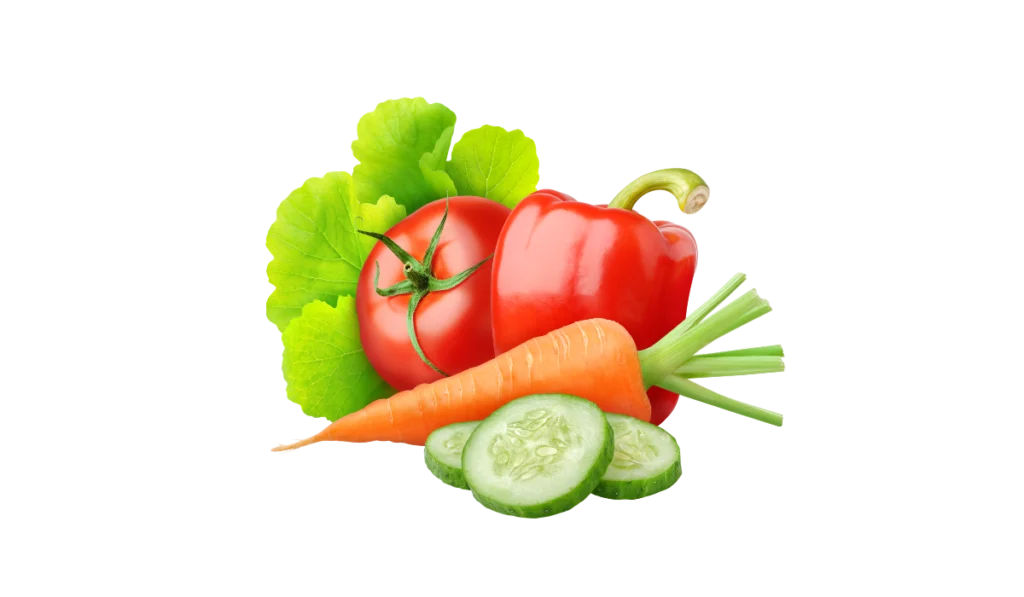
These fibers, when fermented, lead to the production of short-chain fatty acids (SCFAs) and release non-extractable polyphenols A Trusted Source Ding Y, Morozova K, Scampicchio M, Ferrentino G. Non-eextractable polyphenols from food by-products: current knowledge onrecovery, characterisation, and potential applications.Process.(2020) 8:925. doi: 10.3390/pr8080925 CrossRef Full TextGoogle Scholar.
Studies have shown that these fibers and polyphenol-derived metabolites act synergistically to improve host health, such as reducing hepatic cholesterol levels and inhibiting harmful bacteria in the gut A Trusted Source Celik EE, Gokmen V, Skibsted LH. Synergism between soluble and dietary fiber bound antioxidants.J Agric Food Chem.(2015) 63:2338–43. doi: 10.1021/acs.jafc.5b00009 PubMed AbstractCrossRef Full TextGoogle Scholar.
Polyphenols can also increase the production of SCFAs, which in turn affects the absorption of polyphenol metabolites.
The mechanism behind this is not fully understood, but it is hypothesized that polyphenols may inhibit mouth amylase, leading to an increased concentration of complex carbohydrates reaching the gut,
or by increasing the number of anaerobic bacteria in the gut environment A Trusted Source Li J, Wu T, Li N, Wang X, Chen G, Lyu X. Bilberry anthocyanin extract promotes intestinal barrier function and inhibits digestive enzyme activity by regulating the gut microbiota in aging rats.Food Funct.(2019) 10:333–43. doi: 10.1039/C8FO01962BPubMed AbstractCrossRef Full TextGoogle Scholar.
This leads to a polyphenol prebiotic pathway, resulting in the production of SCFAs
Furthermore, polyphenol and carbohydrate substrates can facilitate cooperative interactions between different bacteria in the gut
For example, a study showed that the presence of starch increased the quercetin-degrading activity of Eubacterium ramulus, resulting in the production of beneficial metabolites and SCFAs A Trusted Source Rodriguez-Castano GP, Dorris MR, Liu X, Bolling BW, Acosta-Gonzalez A, Rey FE.Bacteroides thetaiotaomicronstarch utilization promotes quercetin degradation and butyrate production byEubacterium ramulus.Front Microbiol(2019) 10:1145. doi: 10.3389/fmicb.2019.01145 PubMed AbstractCrossRef Full TextGoogle Scholar.
Polyphenols: Your Guide to Gut Health
Polyphenols, found in various foods, play a crucial role in maintaining a healthy gut microbiota.
To understand the ecological role of these polyphenols, or "duplibiotics," simplified microbiotas or key microbial consortia co-cultures can be used A Trusted Source 251. Reveron I, Jimenez N, Curiel JA, Penas E, Lopez de Felipe F, de Las Rivas B, et al. Differential gene expression byLactobacillus plantarumWCFS1 in response to phenolic compounds reveals new genes involved in tannin degradation.Appl Environ Microbiol.(2017) 83:e03387–16. doi: 10.1128/AEM.03387-16PubMed AbstractCrossRef Full TextGoogle Scholar.
These studies help identify the antimicrobial activity and prebiotic effect of polyphenols on gut microbiota.
Additionally, whole microbiota stabilized in intestinal in-vitro systems like SHIME have been utilized to assess polyphenols' impact on microbiota composition and function A Trusted Source Garcia-Villalba R, Vissenaekens H, Pitart J, Romo-Vaquero M, Espin JC, Grootaert C, et al. Gastrointestinal simulation model TWIN-SHIME shows differences between human urolithin-metabotypes in gut microbiota composition, pomegranate polyphenol metabolism, and transport along the intestinal tract.J Agric Food Chem.(2017) 65:5480–93. doi: 10.1021/acs.jafc.7b02049 PubMed AbstractCrossRef Full TextGoogle Scholar.
While in-vitro models lack direct interactions with the host, they are essential tools in uncovering the health benefits induced by polyphenol-rich food intake.
Future human clinical studies are crucial to confirm these benefits A Trusted Source 259. Aoki-Yoshida A, Saito S, Fukiya S, Aoki R, Takayama Y, Suzuki C, et al.Lactobacillus rhamnosusGG increases Toll-like receptor 3 gene expression in murine small intestineex vivoandin vivo.Benef Microbes. (2016) 7:421–9. doi: 10.3920/BM2015.0169PubMed AbstractCrossRef Full TextGoogle Scholar A Trusted Source 260. Chassaing B, Van de Wiele T, De Bodt J, Marzorati M, Gewirtz AT. Dietary emulsifiers directly alter human microbiota composition and gene expressionex vivopotentiating intestinal inflammation.Gut.(2017) 66:1414–27. doi: 10.1136/gutjnl-2016-313099PubMed AbstractCrossRef Full TextGoogle Scholar.
Discussion and Conclusion
- Polyphenols have been shown to have a positive impact on gut microbiota by stimulating the growth of beneficial bacteria and inhibiting harmful ones.
- Beneficial gut microbes can transform polyphenols into bioactive phenolic metabolites, contributing to human health.
- Polyphenols exhibit antimicrobial mechanisms, modulating gut microbial communities and promoting a healthier balance of bacteria.
- Polyphenols have prebiotic-like effects, creating a favorable environment for beneficial bacteria by eliminating pathogens, strengthening the mucosal barrier, and reducing oxidative stress.
- The interaction between polyphenols and the gut microbiota can lead to the production of short-chain fatty acids, which can affect the absorption of polyphenol metabolites.
These findings highlight the potential of polyphenols in promoting gut health and suggest that they can be considered as prebiotics.
Further research is needed to fully understand the mechanisms and optimize the health benefits of polyphenols in relation to gut microbiota.
Review date not set.
How we reviewed this article:
Latest on:
